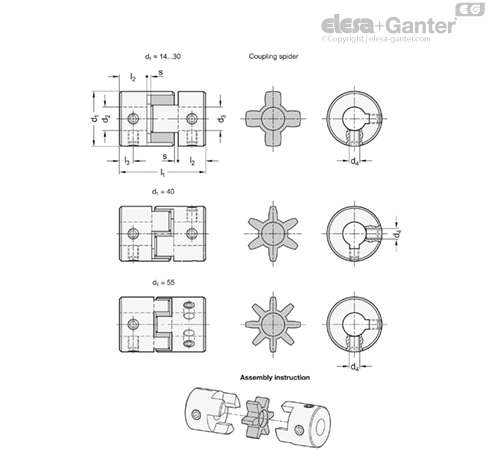GN 2241
Elastomer jaw couplings
with grub screw

GN 2241-B
Elastomer jaw couplings
without keyway

GN 2241-K
Elastomer jaw couplings
with keyway (from d1 = 30)
GN 2241-B
Elastomer jaw couplings
without keyway


Bore codes
- Type B: without keyway
- Type K: with keyway (from d1 = 30)
Hub
Aluminum AL
anodized, natural color
Coupling spider
Polyurethane (TPU)
temperature resistant up to 60 °C
Hardness
80 Shore A, blue BS
92 Shore A, white WS
98 Shore A, red RS
Grub screws
- Steel, blackened
- for d2 / d3 ≤ 4, one grub screw
- for d2 / d3 > 4, two grub screws
Temperature range: -20 °C up to +60 °C
LOOKING FOR ALUMINIUM PROFILES:
Feeling overwhelmed with what product to choose?
Don’t delay, give OIC a call and talk to us about your industrial application. Our aim is to help your business choose the right Elesa+Ganter element for the function you need. Whether you need to clamp, close, connect, control, level, manoeuvre, measure or set. OIC has an Elesa+Ganter machine element to fit your need.
We want to find out about your industrial application need and where we can help. Our contact details are below.







